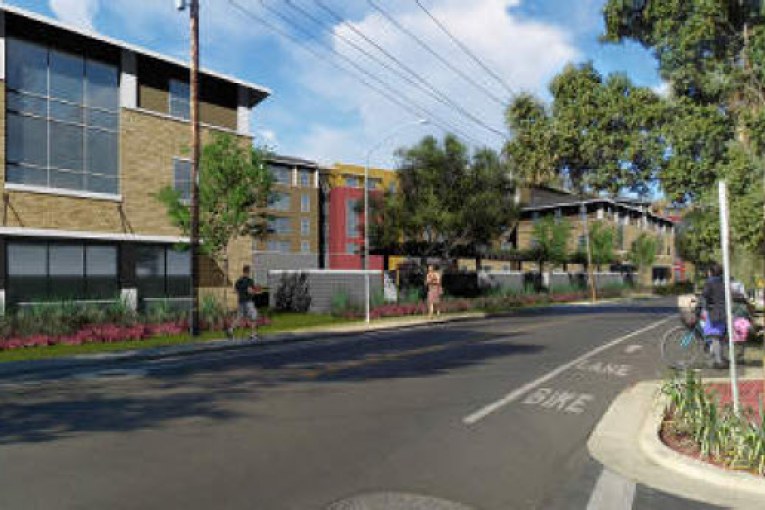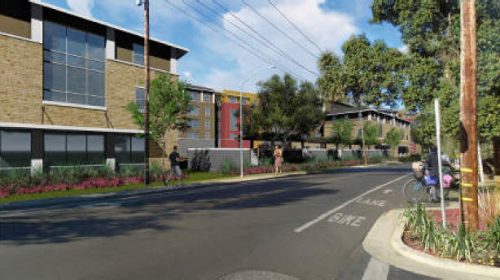

The discussion on student housing has really advanced to the point where no one disputes the fact that there is a student housing crisis. The question now comes down to deciding how much housing we need and where it should go.
The Planning Commission on Wednesday recognized, even after the university agreed to provide 2200 additional beds, that we need to take steps in the city to alleviate the city housing crisis.
Critics will continue to question the form of the housing, the so-called “mega-dorm” structure. Some will invariably argue that building for student housing will not open up single-family homes for other uses.
But they miss a critical point – the shortage of student housing is so deep that their market demands are overwhelming the rest of the market. Deal with the area of greatest demand and greatest growth potential, and then we can evaluate the rest of the system to see if it too needs adjustments.
The student presence has really become a crucial catalyst for change in the community. And I believe that its voice played a critical role at the Planning Commission level.
What was compelling was that the voice was real, it expressed real concerns, and it did not sound like a well-rehearsed presence that came together at the urging of the developers. In fact, many 
of the student voices were quite critical of the project itself and even questioned its affordability model.
At the same time, they saw the need for housing as so overwhelming that many basically said this is not a perfect project, but we need it anyway and it is a good start.
On Wednesday night at least 20 students came out to speak mostly in favor of Lincoln40. I am going to break down a few themes here.
The biggest take away is that the current market makes students – already inexperienced and vulnerable – even more vulnerable.
Josh Dalavai, ASUCD President, pointed out: “I’m sure you’ve all heard many horror stories of landlord abuse… those are the types of conditions that students are subjected to in realm of inexperience when it comes to renting and signing leases for the first time. I very much support Lincoln40 to try to alleviate that problem.”
The stories were real and the problem with landlord abuse is exacerbated by the fact that students in bad situations often have nowhere to go and no recourse. The student, rooming with an individual who had a mental breakdown, realized she was not safe, and it took two months to find a place just in time to avoid becoming homeless.
Another student put up with an unqualified maintenance man and a myriad of problems, in part because of having to make fast and uninformed choices. And there are not a lot of options when things go wrong.
Over the last few years I have heard stories where students have no heating or air conditioning, and at times even intermittent power because of poor maintainence of the rental stock. The city took steps with the rental inspection program, but until the 0.2 percent vacancy situation can improve, conditions probably won’t either.
A second key point is that students do not view the push for housing in Davis as letting UC Davis off the hook.
As Josh Dalavai put it, there is a shared agreement “that the university does need to increase their level of support for student housing. This has been no secret between the students and the administration of the university.”
He said, “It’s not something we’d like to let them off the hook for.”
As another student, Adam, pointed out, “We are fighting the university, we are asking the university to build more.” He added, “Today, the university approved 2000 new units that add up to 8500 new beds so the university builds when the city builds.”
Third, affordability is a major concern both with the Lincoln40 project and overall. Some of the graduate students noted that Solano Park is the only affordable student housing at UC Davis, but it is only meeting one-third of the demand and the university is proposing to level it and put up more luxury housing.
The students don’t believe that Lincoln40 offers enough affordability. For them affordable rent would be $570, and they asked “are the rents going to be that low? If they’re not, they’re not affordable.” One added, “An income-based model gets you closer to affordability than a market-based one.”
However, even with those concerns, she is supportive of the project, “We’re not saying don’t build. We want more housing in Davis. And the fact that we’re talking about affordability is a great thing.”
Students are practical as well. Another student pointed out, “I would be happy to fight for the 35 percent affordability for students. I am happy to fight for lower cost of housing for student.” She said this is a for-profit model and at this point “demanding things of them seems a little futile considering many of next year are trying to sign leases and some of us may not even have a place to go to.”
That leads to my final point, students recognize that this is not a perfect project. They recognize that the developers are building them to make money.
As one student pointed out: “I support Lincoln40 despite it not being perfect. It will alleviate some of the housing problems in Davis.”
That is a big thing. Students view themselves as beggars at this time. They do not believe they have the luxury to nitpick the project.
“The reason that I’m supporting the Lincoln40 project is I believe we have to start somewhere,” another student said.
Another added that he understands the concerns about the project, but said, “We have to start somewhere and that somewhere has to be this.”
This is a pragmatic approach from students. Often in housing discussions we hear the community complaining because there are elements of a project that they do not believe are good enough. Sometimes that leads to opposition to projects, other times it leads to compromise.
In a for-profit model there are by nature always trade-offs between the ideal project, if cost were no object, and the reality that costs and profit motives impose.
What has happened is that, over the last 15 years, we have lost the balance needed to weigh the needs of the students against the perfect project to fill all community needs. There are strengths of Lincoln40 and there are trade-offs. The key will be to attempt to utilize the strengths of the project and live with some of the trade-offs.
—David M. Greenwald reporting


I was just talking to a Cal student and for the most part rents in Berkeley are MORE than DOUBLE the rents in Davis (and rents in Westwood and La Jolla around UCLA and UCSD are even higher) so someone needs to give the UCD kids a reality check before they spend hours complaining.
For the kids who get into UC Davis with parents who make over $80K (the cut off for free tuition) that don’t want to give up driving Lexus to help their kids with college expenses the kids can easily defer admission to UC go to a local JC for a couple years while living at home and working part time. Since the JC classes are targeted to the typical (not smart enough to get in to Sac State) JC kid most people smart enough to get into Sac State can get a 4.0 GPA at a JC and a kid smart enough to get into UC Davis can easily transfer to UCD with a 4.0GPA with little effort at all end end up with a UC Davis degree that looks the same on the wall as a degree given to the kid who was in town paying rent in Davis for twice as long taking much harder under division classes.
http://admission.universityofcalifornia.edu/paying-for-uc/glossary/blue-and-gold/
This is exactly what I’ve been pointing out, although you’ve provided more detail. (And, perhaps I wouldn’t put it in such a blunt manner.)
Ken A, are you saying that UCD students should complain because they’re being screwed only half as much as other UC students on rent? That’s a weird rationale. Rents in Davis are higher than in surrounding communities and much of the rest of the state. Telling someone that they have no standing to complain because it could be even worse is not a valid counterargument unless there is no valid alternative. But there are alternatives–more housing in town that will reduce rents.